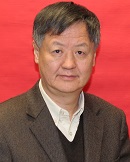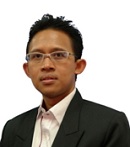* Invited and Regular Papers will be published in various Indexed Journals (ISI, SCOPUS, EBSCO, DBLP, ACM, IET/INSPEC, Proquest, Copernicus etc...) based on quality and reviewers' recommendations or in our Books in Springer Verlag. Click here






* Authors will be informed about the title of the Journal before
their registration.
* Contact us by email:
support@inase.org Registration fees
Publication Ethics and Malpractice Statement
Deadlines
(Previous Conference: MEROSTA 2016, Corfu Island, Greece, July 14-17,
2016)
PLENARY SPEAKERS:

Prof. Dimitrios A. Karras, Sterea Hellas Institute of Technology, Dept. Automation, GREECE, e-mail: dakarras2010@gmail.com
Title: "A Comprehensive Overview of Advances in Deep Learning Methods, Applications and Trends"
Abstract: This plenary speech aims at providing a concise overview of recent advances in general deep learning frameworks and strategies, algorithms, architectures and their applications mainly to a variety of signal and information processing tasks. The application areas span speech recognition, computer vision and more that have already been transformed by the successful use of deep learning technology as well as application areas that have the potential to be improved significantly by deep learning and that have been gaining advantages from recent research, including data mining and information retrieval, natural language and text processing, and multimodal information processing involving multitask deep learning. Moreover, open problems in deep learning will be discussed in detail and new approaches in the solution of such problems will be illustrated, including initialization of deep neural networks architectures, efficient training of unsupervised and supervised deep learning architectures. Finally, future trends and predictions in the theory and applications of deep learning models will be reported.

Prof. Jun Wang, Department of Computer Science, City University of Hong Kong, Hong Kong, e-mail: jwang.cs@cityu.edu.hk
Title: "Nonlinear and Robust Model Predictive Control of Mechatronic Systems Based on Collective Neurodyanmic Optimization "
Abstract: Model predictive control (MPC) is an advanced control methodology widely accepted by both academics and industries. In this talk, nonlinear and robust MPC approaches will be presented based on multiple neural networks. To tackle the nonconvexity in the problem formulation with nonlinear systems, the original nonconvex optimization problem associated with nonlinear MPC is first reformulated as a convex one by means of decomposition via Taylor expansion. An online supervised learning algorithm is initially developed for estimating the unknown residual term resulted from the decomposition. To save online computational time, offline supervised learning is also carried out based on feedforward neural networks for parameter estimation. In addition, a collective neurodynamic optimization approach is developed with several neurodynamic optimization models for nonlinear MPC without linearization. The results are extended for robust MPC based on minimax and invariant-tube formulations. Simulation results of many examples are provided to demonstrate the effectiveness and performance of the proposed approaches for the control of mechatronic systems.
PLENARY SPEAKERS:

Prof. Eko Supriyanto, Faculty of Medical Engineering, Universiti Teknologi Malaysia, MALAYSIA e-mail: eko@biomedical.utm.my
Title: "Electromagnetic Interference Risk Online Monitoring System"
Abstract: Advancement of electronics and telecommunication technologies has increased risk of electromagnetic interference at some critical areas such as hospital and energy processing plant. The risk is affected not only by electromagnetic sources but also electronics device as a victim of electromagnetic interference. In order to estimate the risk of electromagnetic interference, electromagnetic related information on victim device, electromagnetic source, electromagnetic pathway, and electromagnetic environment is required. The estimated risk at difference location is useful information for developing risk mitigation plan. The mitigation plan can be executed at the right time, if a real time electromagnetic interference risk monitoring system is implemented. In this paper, a new method and system to identify, estimate and mitigate risk of electromagnetic interference real time is discussed. The system consists of electromagnetic risk estimator, electromagnetic device tracker, central processing unit and mobile user interface. The system has been implemented and tested at few hospitals, as well as oil and gas processing systems. Test result shows that the system is able to be used for monitoring risk of lightning, high voltage power transmission, radio frequency communication and detection system at some critical areas inside and outside building.
Paper Submission
Papers must be written in the correct format: MS Word.doc or LaTeX or LaTeX2 and must be uploaded using the following form as .doc, or .pdf file. Invited and Regular Papers will be published in various Indexed Journals based on quality and reviewers' recommendations. Only full papers will be promoted to reviewers for thorough peer review. The deadline for paper submission expired. We do not accept papers any longer.
Organizing Committee
General Chairs (Editors)
-
Prof. Bogdan Epureanu,
University of Michigan
Ann Arbor, MI 48109, USA -
Prof. Cho W. Solomon To,
ASME Fellow, University of Nebraska,
Lincoln, Nebraska, USA -
Prof. Hyung Hee Cho, ASME Fellow
Yonsei University
and The National Academy of Engineering of Korea,
Korea
Senior Program Chair
- Prof. Ottavia Corbi,
University of Naples Federico II,
Naples, Italy
Program Chairs
-
Prof. Zhongmin Jin,
Xian Jiaotong University, China
and University of Leeds, UK -
Prof. Constantin Udriste,
University Politehnica of Bucharest,
Bucharest
Romania -
Prof. Sandra Sendra
Instituto de Inv. para la Gestión Integrada de Zonas Costeras (IGIC)
Universidad Politécnica de Valencia
Spain
Tutorials Chair
-
Prof. Pradip Majumdar
Department of Mechanical Engineering
Northern Illinois University
Dekalb, Illinois, USA
Special Session Chair
-
Prof. Essam Eldin Khalil,
ASME Fellow,
Cairo University, Cairo,
Egypt
Workshops Chair
-
Prof. Hyung Hee Cho, ASME Fellow,
Yonsei University (and National
Academy of Engineering of Korea),
Korea
Local Organizing Chair
-
Dr. Claudio Guarnaccia, University of Salerno, Italy
Publication Chair
-
Prof. Marcin Kaminski,
Department of Structural Mechanics,
Al. Politechniki 6, 90-924 Lodz, Poland
Publicity Committee
- Prof. Kumar Tamma,
University of Minnesota,
Minneapolis, MN, USA -
Prof. Myriam Lazard
Institut Superieur d' Ingenierie de la Conception
Saint Die, France
International Liaisons
- Prof. Marina Shitikova,
Voronezh State University of Architecture and
Civil Engineering, Voronezh, Russia - Prof. Olga Martin
Applied Sciences Faculty
Politehnica University of Bucharest
Romania - Prof. Vincenzo Niola
Departement of Mechanical Engineering for Energetics
University of Naples "Federico II"
Naples, Italy -
Prof. Christopher G. Provatidis,
National Technical University of Athens,
Zografou, Athens, Greece
Steering Committee
- Prof. Aida Bulucea, University of Craiova, Romania
- Prof. Zoran Bojkovic, Univ. of Belgrade, Serbia
- Prof. Ottavia Corbi, University of Naples Federico II, Italy
- Prof. Imre Rudas, Obuda University, Budapest, Hungary
Program Committee
- Prof. Cho W. Solomon To, ASME Fellow, University of Nebraska, Lincoln, Nebraska, USA
- Prof. Kumar Tamma, University of Minnesota, Minneapolis, MN, USA
- Prof. Ottavia Corbi, University of Naples Federico II, Naples, Italy
- Prof. Pierre-Yves Manach, Universite de Bretagne-Sud, Bretagne, France
- Prof. Jiin-Yuh Jang, University Distinguished Prof., ASME Fellow, National Cheng-Kung University, Taiwan
- Prof. Hyung Hee Cho, ASME Fellow, Yonsei University (and National Academy of Engineering of Korea), Korea
- Prof. Robert Reuben, Heriot-Watt University, Edinburgh, Scotland, UK
- Prof. Ali K. El Wahed, University of Dundee, Dundee, UK
- Prof. Yury A. Rossikhin, Voronezh State University of Architecture and Civil Engineering, Voronezh, Russia
- Prof. Igor Sevostianov, New Mexico State university, Las Cruces, NM, USA
- Prof. Ramanarayanan Balachandran, University College London, Torrington Place, London, UK
- Prof. Sorinel Adrian Oprisan, Department of Physics and Astronomy, College of Charleston, USA
- Prof. Yoshihiro Tomita, Kobe University, Kobe, Hyogo, Japan
- Prof. Xianwen Kong, Heriot-Watt University, Edinburgh, Scotland, UK
- Prof. Ahmet Selim Dalkilic, Yildiz Technical University, Besiktas, Istanbul, Turkey
- Prof. Essam Eldin Khalil, ASME Fellow, Cairo University, Cairo, Egypt
- Prof. Jose Alberto Duarte Moller, Centro de Investigacion en Materiales Avanzados SC, Mexico
- Prof. Seung-Bok Choi, College of Engineering, Inha University, Incheon, Korea
- Prof. Marina Shitikova, Voronezh State University of Architecture and Civil Engineering, Voronezh, Russia
- Prof. J. Quartieri, University of Salerno, Italy
- Prof. ZhuangJian Liu, Department of Engineering Mechanics, Institute of High Performance Computing, Singapore
- Prof. Abdullatif Ben-Nakhi, College of Technological Studies, Paaet, Kuwait
- Prof. Junwu Wang, Institute of Process Engineering, Chinese Academy of Sciences, China
- Prof. Jia-Jang Wu, National Kaohsiung Marine University, Kaohsiung City, Taiwan (ROC)
- Prof. Moran Wang, Tsinghua University, Beijing, China
- Prof. Gongnan Xie, Northwestern Polytechnical University, China
- Prof. Ali Fatemi, The University of Toledo, Ohio, USA
- Prof. Mehdi Ahmadian, Virginia Tech, USA
- Prof. Gilbert-Rainer Gillich, "Eftimie Murgu" University of Resita, Romania
- Prof. Mohammad Reza Eslami, Tehran Polytechnic (Amirkabir University of Technology), Tehran, Iran
- Dr. Anand Thite, Faculty of Technology, Design and Environment Wheatley Campus, Oxford Brookes University, Oxford, UK
- Dr. Alireza Farjoud, Virginia Tech, Blacksburg, VA 24061, USA
- Dr. Claudio Guarnaccia, University of Salerno, Italy
Topics of Interest
Mechatronics, Mechatronics systems, Machine vision, Automation and robotics,
Servo-mechanics, Sensing and control systems, Automotive engineering, automotive
equipment in the design of subsystems such as anti-lock braking systems,
Computer-machine controls, such as computer driven machines like IE CNC milling
machines, Expert systems, Industrial goods, Consumer products, Medical
Mechatronics, medical imaging systems, Structural dynamic systems,
Transportation and vehicular systems, Mechatronics as the new language of the
automobile, Diagnostic, reliability, and control system techniques, Computer
aided and integrated manufacturing systems, Computer-aided design, Engineering
and manufacturing systems, Packaging, Microcontrollers / PLCs, Mobile apps
Mechanical engineering and materials science, Systems and control engineering,
Optomechanics (optical engineering), Robotics, Actuation, Sensing, Motion
and manipulation, Locomotion, Environmental interaction and navigation of
Robots, Human-robot interaction, Control of Robots, Autonomy levels, Robotics
research, Dynamics and kinematics, Education and training of Robots, Kinematics,
dynamics, control, and simulation of robots and intelligent machines and
systems, design of robotic mechanisms, man-machine interface and integration,
robotics-related computer hardware, software, and architectures, linkage to
computer-aided engineering, robotics in manufacturing and flexible automation,
robotics and automation in less structured environments, vision and other
non-contact sensory systems, and tactile and other contact sensory technology,
Structural analysis, Structural Mechanics, Applied Mechanics, materials science
and applied mathematics to compute a structure's deformations, internal forces,
stresses, support reactions, accelerations, and stability. Method of Joints,
Method of Sections, Elasticity methods, Methods using numerical approximation,
Finite Elements, Finite Differences, Boundary Elements, Integral Equations,
Optimization for Structural analysis.
Others...